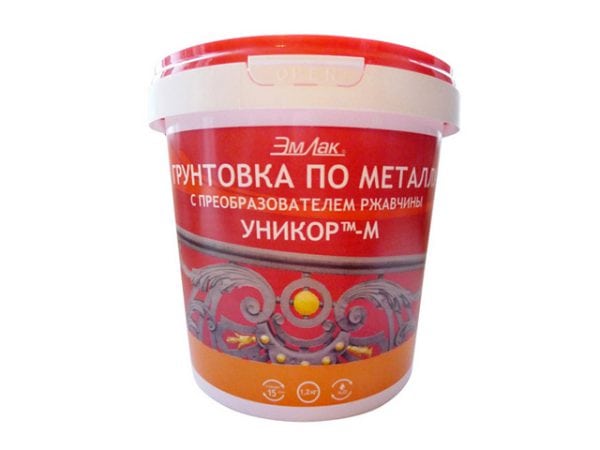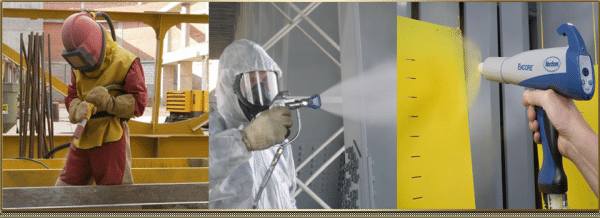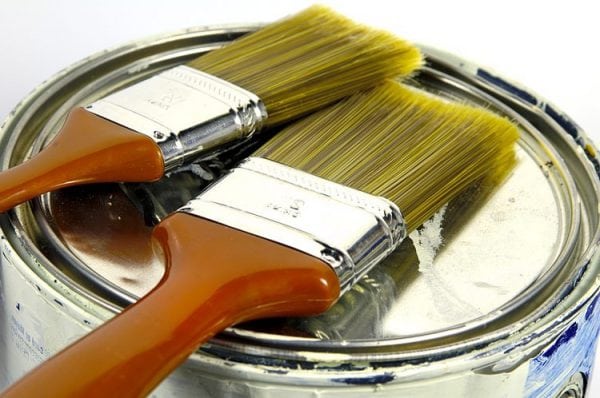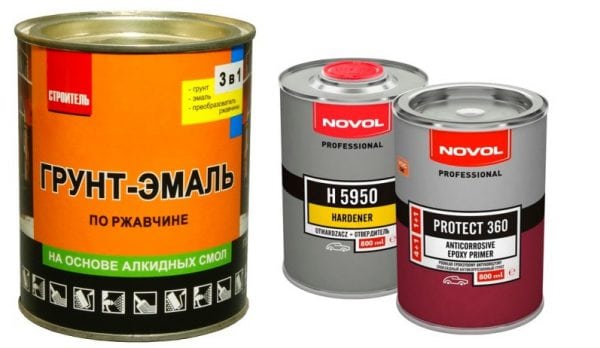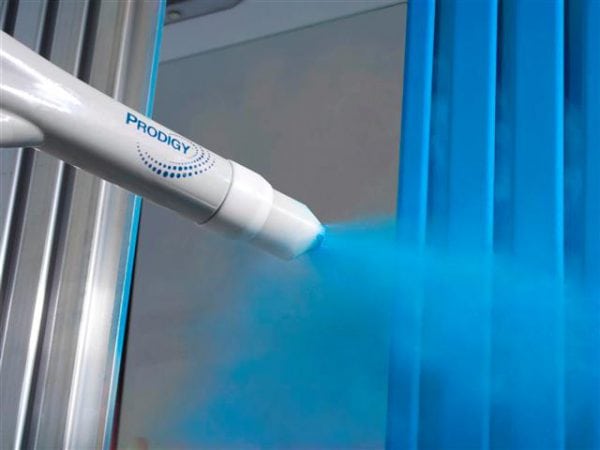It is impossible to imagine our life without metal structures. These are beautiful wrought-iron fences, and garages of metal profiles or galvanized steel, and children's swings and benches, communications and much more. Painted in a variety of colors, metal products are beautiful and durable. But simple staining is not enough - only a primer for metal will provide the necessary protection against corrosion and rust.
- The benefits of primer before staining
- What kind of soil mixture is needed
- Varieties of solutions for processing
- Execution Features
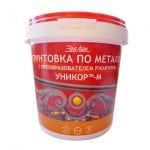
Neglect during cosmetic repairs of such an important intermediate stage of work as priming can lead to additional costs:
- enamels and varnishes for outdoor work will not hold steady, under the negative influence of the external environment will begin to delaminate and crumble;
- on freshly painted objects and buildings in a short time rust spots appear;
- the consumption of paints and varnishes when applied to an untreated surface will increase significantly.
The benefits of primer before staining
The primer of the metal allows to minimize damage from the influence of various factors, to extend its operational life. In addition, depends on its use:
- quality of applying a decorative coating to the product;
- its durability;
- protection against the damaging effects of corrosion and rust;
- paint saving.
If you think about it, it is better to spend a little more time with the current repair before painting and for a long time postpone the prospect of the next. Moreover, financial costs will decrease significantly, because soils are much cheaper.
What kind of soil mixture is needed
There are many types of metal alloys. For maximum effect, when processing them, you need to choose "your" mixture.
- For ferrous, such as cast iron, some alloys based on iron and steel, compositions that slow down the corrosion process are needed. After all, such materials are highly susceptible to this effect. In addition, the primers provide better adhesion during the final painting.
- Colored, such as aluminum, copper, brass, zinc, a primer is necessary only to ensure high-quality adhesion of the coating to the substrate. These same types of mix-primers are used to process galvanized iron and steel.
- Compounds based on organic solvents are well suited for galvanized, they are also well recommended when processing bases of non-ferrous alloys.
- Black, already bearing traces of rust and corrosion, must be treated with a rust converter, which, through a chemical reaction, turns it into a durable film that can partially repair the damaged coating. Working with this composition does not require thorough preliminary cleaning before applying it - just remove all surface contamination.
- Special building mixtures against stains for non-absorbent surfaces are allocated to a special group. They block a variety of contaminants (soot, fat and others) when there is no way to clean them. If this is not done, then in the near future spots will "appear" after painting.
The primer for metal used in outdoor work must be selected in accordance with the climatic conditions of the region, and for indoor use, it must be taken into account the conditions of their operation and the level of toxicity, especially when working in residential premises.
to contents ↑Varieties of solutions for processing
The most common primers for metal:
- Among the different types of solutions used for this purpose, the most popular are alkyd, made on an alkyd varnish base with the addition of additives and stabilizers. Such a primer may be gray or brown. Quick-drying and very durable, they protect metal structures from the outside and from the inside, and are a good basis for most finish coatings.
- Phosphoric acid formulations are best used on substrates already affected by rust. They successfully fight with it, protecting and restoring the surface, significantly improving adhesion. The use of phosphogranes significantly strengthens the destroyed base, stopping the oxidation processes occurring on it.
- Acrylic water dispersion primer Helps to level surfaces, increase adhesion. Quick-drying, it is safe for the human body and is suitable for indoor use. Suitable for iron and non-ferrous alloys. Some types of acrylic compounds are not suitable for painting, for example, acid compositions - the paint will not lie on them evenly, it will be smeared. They are applied when they are going to leave the product without a decorative finish.
- Epoxy primers are characterized by a high level of protection against moisture and other atmospheric influences. They are used not only for the protection of metal structures, but also for automobiles.
- Passivating compounds inhibit corrosion processes and are indispensable for external work. Well protect metal products from negative effects. Their chemical formula works even when water penetrates through the protective film to the surface.
In addition, the purchased primer for metal must meet the following factors:
- what metals are processed: black or non-ferrous;
- conditions for the product: indoors or outdoors, load on it;
- what final coating will be applied.
Having determined the necessary requirements, you can decide which composition is best for the primer for metal to have maximum protection.
It is worth paying attention to the form of release and take into account the tool with which the primer will be applied to the surface.
- When using a spray gun, liquid mixtures should be taken. Powder bases or concentrates are well suited. They can be diluted to the required consistency with water or solvent. The use of this device is advisable when applying protection to metal structures, large sheets of iron. It must be remembered that the water-dispersion solutions are quick-drying, and the application of the next layer must be started as soon as the already applied one dries.
- Any primer is suitable for the roller. It provides an even and economical material distribution.
- It is not economical to use a brush as an independent tool when priming a metal - the soil consumption is too high. It is good for her to work in hard-to-reach places, working on the main area with other tools.
- Solutions in aerosol cans are available. Working with them is convenient, but they have a small capacity. To process large buildings or sheet iron, you will have to purchase them in large quantities.
When buying a mixture, you must carefully read the instructions and consider:
- Consumption per 1 m2. There should not be a break in the application of the primer, you must immediately purchase the necessary amount.
- If the drug is toxic, then you need to stock up on protective items: a respirator, glasses, gloves.
Execution Features
The primer of metal passes almost the same way as products from other materials, with the exception of some features:
- Before starting the main work, the surfaces must be cleaned of dirt and old paint. It is necessary to remove all traces of corrosion from iron, unless you use a rust converter - such preparation is not required there.
- If dried paint is difficult to remove from metal substrates, then a softener must be used. After its application, this process is easy. As a rule, softeners include anti-corrosion additives.
- After removing contaminants, the surfaces must be sanded to a shine and washed. Products made of non-ferrous alloys are smooth, it is quite simple to wash them.
- Before starting the metal primer, degreasing should be carried out whenever possible. This will greatly improve the quality of the application of the soil, increase its adhesion to the base. Large structures are processed using special machines, for small ones you can use a cotton cloth.
- The primer is applied on a dry, clean, fat-free metal surface. The solution is distributed over it in a thin layer, as it dries, the remaining necessary layers are applied. It is important to note that two thin layers provide more protection than one thick overlay.
- After the last layer has dried, you need to immediately proceed to the final coloring of the product. If this is not done immediately, then dust may accumulate on it, which will significantly reduce adhesion, and this will affect the quality. In the next article, read about what to paint so that the metal does not rust.
Compliance with all stages of the preparatory work and correctly made metal primer can provide beauty and high-quality protection of metal structures, significantly increase their service life and postpone the prospect of the next cosmetic repair for a long time. Qualitatively primed and painted product is reliably protected from aggressive environmental influences and is able to please a fresh appearance for a long time.

